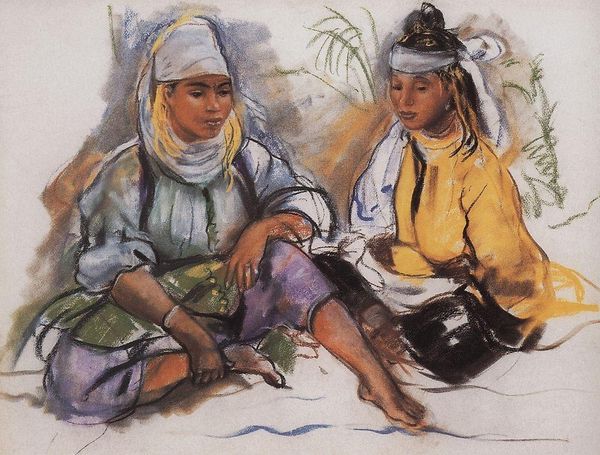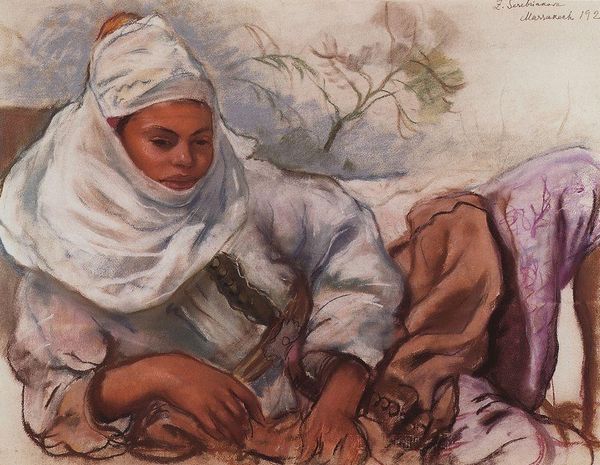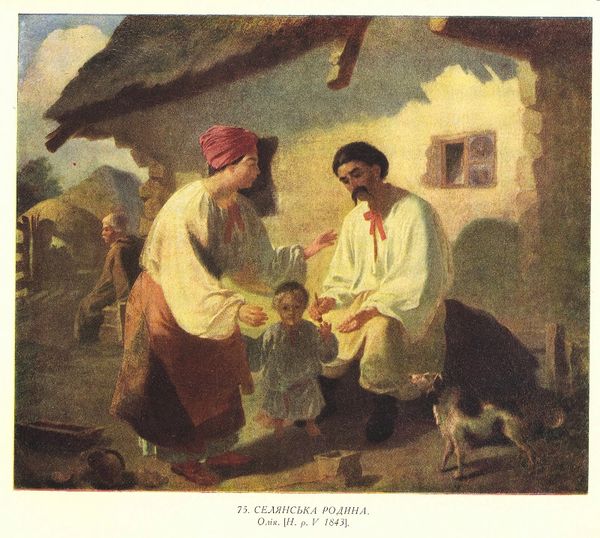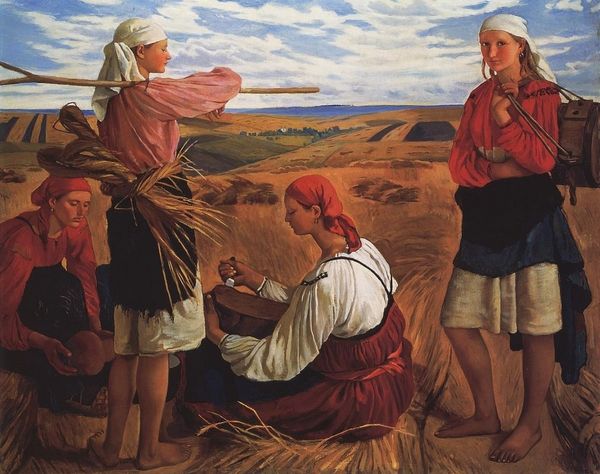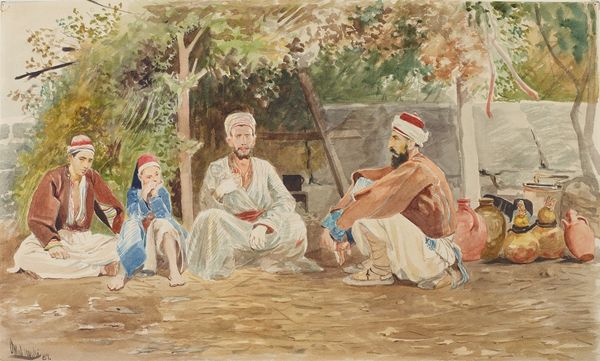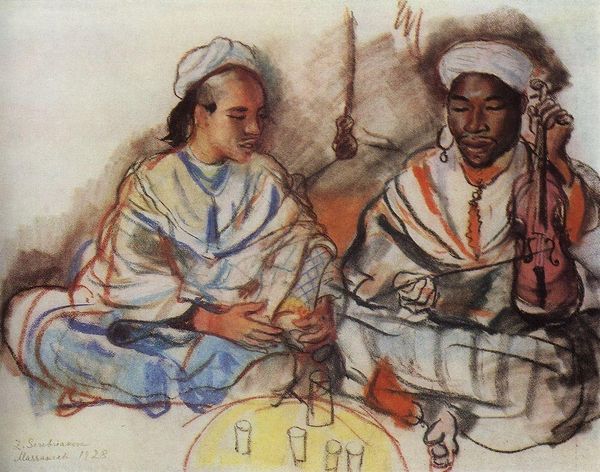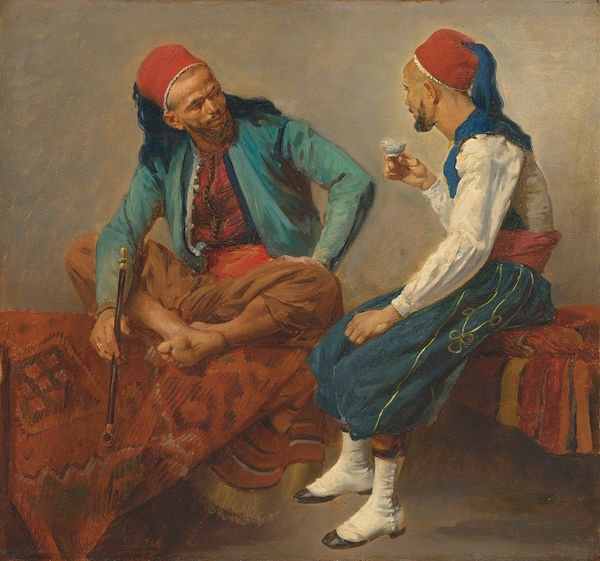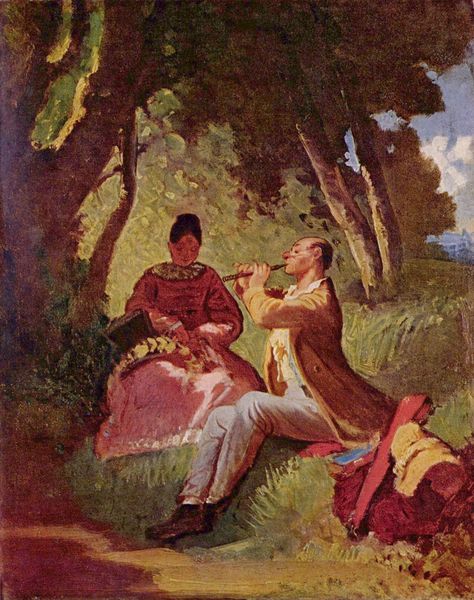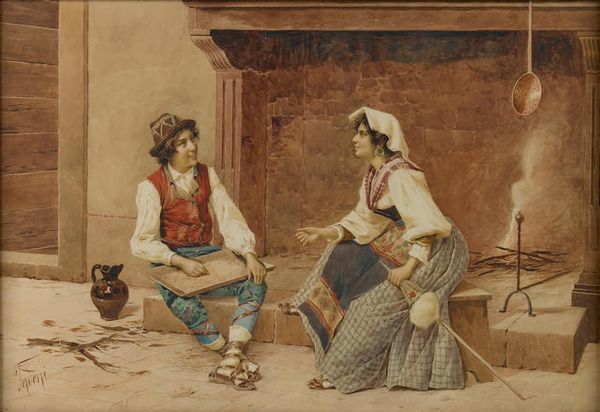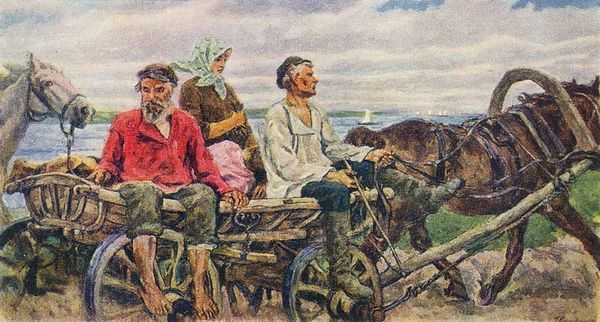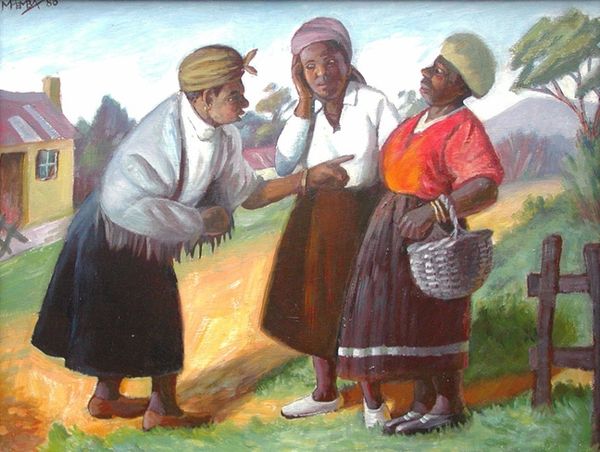
painting, watercolor
#
portrait
#
painting
#
oil painting
#
watercolor
#
romanticism
#
orientalism
#
portrait drawing
#
genre-painting
#
watercolor
Dimensions: 9 x 11.25 cm
Copyright: Public domain
Curator: What strikes me immediately is the way the watercolour bleeds and blurs – such a contrast to the clarity of line that one might expect in a Delacroix portrait. It adds a certain languor. Editor: This is Eugène Delacroix's work, "Two Moroccans Seated In The Countryside", and that blurriness certainly sets a mood. I am interested, however, in the materials here. Delacroix's masterful handling of watercolour lets the ground almost breathe – the earthiness pulls us in. Look at how he built up the figures using layers of transparent colour, allowing the paper's texture to remain visible. It keeps everything airy, but also substantial somehow. Curator: Airy, yes, like a dream or a memory. Note the clothing. There is a clear difference in the depiction between the elder man's luxurious robe, and the younger man's plain vest. This indicates an important social dynamic, a status or an apprenticeship possibly. Also, consider the significance of the objects. The seated elder holds a book, while the youth seems preoccupied with what could be his firearm, a symbol of readiness, transition or the promise of what will become an expected tool. Editor: That social stratification is important, and I am struck that Delacroix created this through materiality as much as through composition. We also can see his attention to fabrics and the tools in the environment. It isn't just surface treatment. The labour and time taken for such detail is part of this story, not just about recording ethnographic data, but about marking material reality in paint. Curator: It also prompts thinking about power structures: what are the possible interpretations that arise from staging of this mentor and protégé. Their posture almost recalls images of the philosophers, ancient Greek masters teaching youth to embrace higher thinking and ideals...Or does it also point at another social truth that cannot be denied; class hierarchy or colonial rule? Editor: Or perhaps something of both. It reveals a relationship dependent on cultural transmission, built upon labor and social division, that watercolor both exposes and perhaps romanticizes for the viewer. Curator: It does allow for ambiguity, yes. Delacroix leaves us with layered questions about cultural exchange. Editor: Indeed, questions of place and process are key in viewing this evocative piece.
Comments
No comments
Be the first to comment and join the conversation on the ultimate creative platform.

